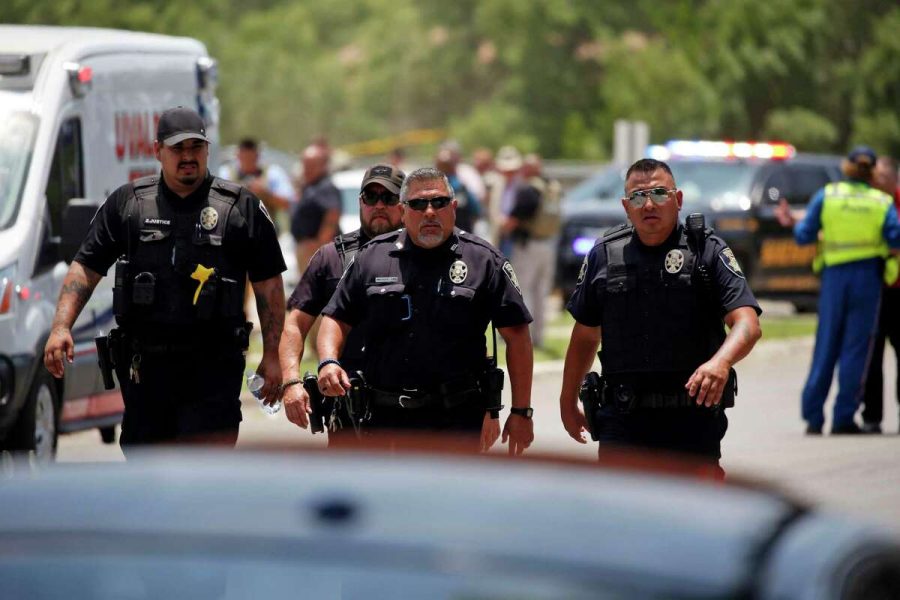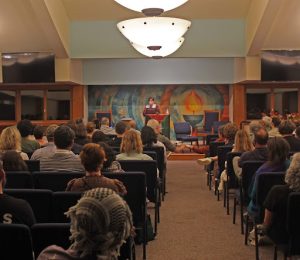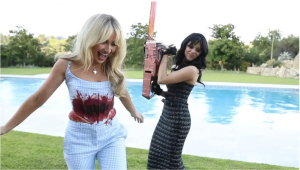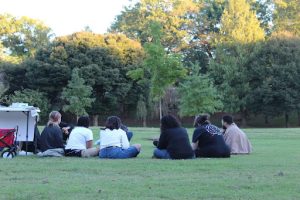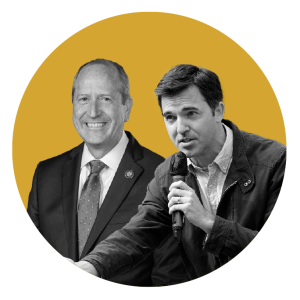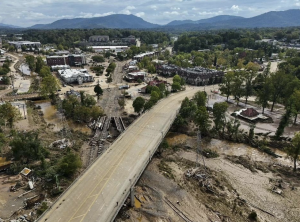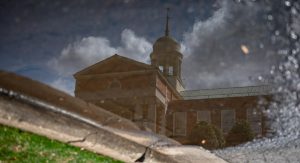The Uvalde police failed their duty to the community, and to themselves
By not engaging the shooter at Robb Elementary School, the police allowed lives to be lost
Courtesy of the Houston Chronicle
The Uvalde Police Department did not fulfill their duty to serve the community, writes Bella Ortley-Guthrie.
July 4, 2022
It took one hour, 14 minutes and 8 seconds for the Uvalde Police and responding officers to stop a mass shooting on May 24 at Robb Elementary School in Uvalde, TX. Nineteen elementary school children and 2 teachers were killed while 17 individuals were injured. In Uvalde, a town 1.5 hours outside of San Antonio, the police force constitutes 40% of the municipal budget, with a focus on protecting a population of over 15,000. Some members of the police force are specifically designated as school district police officers. Their strong presence, both in the community and during the shooting, has led families, government officials and news sources to search for answers as to why it took over 74 minutes for responding officers to neutralize the gunman inside the elementary school.
Steve McCraw, director of the Texas Department of Public Safety, is leading the investigation into the Uvalde shooting and the subsequent police response. McCraw and his team spent weeks reviewing body camera footage, surveillance footage and radio traffic between the varying enforcement agents. The investigation shows clear evidence of a lack of communication and negligence exhibited by the police officers during the active shooting situation.
The shooter arrived at Robb Elementary School at 11:28 a.m. The police were then notified and called at 11:30 a.m. Following that, Uvalde School District Police Chief Pedro ‘Pete’ Arredondo and three other officers arrived at 11:35 a.m. From 11:35 a.m. to 12:50 p.m., over 140 police officers from 14 different agencies arrived at the site. Multiple groups proceeded to enter the building but then backed down — resulting in the shooter remaining in the building and the victims not being evacuated. The shooter spent more than an hour in the building, continuing to injure and kill children and faculty.
McCraw’s investigation emphasizes that police had the resources to act but lacked proper communication and organizational skills, choosing to delay action for over an hour. According to Vox, at 11:36 a.m., “as many as 11 officers had entered, nine with rifles — enough to isolate, distract, and neutralize the shooter. Yet officers waited for radios, rifles, shields, a sniper, and a SWAT team that was never needed.” This failure marked one of the first mistakes in both Arredondo’s and the officers’ responses. In active shooter situations, police officers are trained to reach the shooter in the shortest amount of time possible — that way, the shooter does not continue killing innocent people and children. Katherine Schewit, a retired FBI agent and former head of the FBI’s active shooter program, stated in a Texas Tribune article that police officers must respond to the shooter immediately: “If that means they go through walls, or go around the back through windows, or through an adjoining classroom, they do that.” In refusing to enter and eliminate the gunman, they failed to follow essential protocol in active shooter situations.
The extended response times demonstrate the lack of consistent active shooter training protocol within law enforcement agencies. This delay in police response not only led to the shooter wreaking havoc and violence, but also to delays in medical care and a decrease in the victims’ survival rate. According to Amber Box, in an active shooter situation, the “victim survival rates fall by 7-10% for every minute without emergency treatment, and by 1-2% for less crucial injuries.”
The second mistake occurred at 11:40 a.m., when Arredondo received an incorrect notice that the shooter was contained inside the school — leading to police officers choosing a barricade-type hostage response instead of enacting an appropriate active shooter response. In a barricaded person situation, officers do not attempt to “take out the shooter.” According to a 2020 law enforcement policy report, “a hostage barricade person situation seeks for police and law enforcement to establish in and outer circles around the situation and barricade individuals and gather personnel.” In assuming a hostage barricade situation, police officers immediately failed to confront the active shooter. An NPR article stated that, “as reports have indicated, the school district’s police chief believed that there was no longer an active threat and that the situation at the school was a barricaded-suspect situation.” However, the Uvalde Shooting was not a barricaded situation but one in which the shooter was active with a weapon and inside of an elementary school killing innocent children and staff.
Furthermore, the investigation highlighted a lack of leadership from the incident commander, Arredondo. Although Arredondo was the school district police chief and one of the first to arrive at the scene, he believed that someone else had taken control as head commander. This assumption led to a lack of cohesive leadership throughout the 74 minute delay, contributing to further confusion between the different law enforcement agencies. Furthermore, the investigation confirmed that radios failed and lost radio signals from within the school building, contributing to more confusion between officers and agencies.
After reviewing the investigation and timeline, I am appalled and in disbelief at the police’s response to the active shooting situation. It’s heartbreaking and infuriating to see a poor response from individuals whose job is meant to protect and serve. The Uvalde Police Website states that their police officers follow a code of ethics that “…serves the community by protecting citizens and property, preventing crime, enforcing laws, and maintaining order.” They go on to claim that “the Uvalde Police Department is committed to [providing] superior police service to the public in order to protect life, property and the freedoms provided by the Constitution.”
Arredondo and the police officers failed to follow these codes. They delayed breaching the doors to the classroom multiple times and demonstrated failure in maintaining order amongst themselves and their team. In treating the situation as a barricaded shooter situation, they failed to fulfill their duty to protect life. They failed to organize a cohesive leadership and plan — thus, failing to protect unarmed citizens, many of whom were children. Officers with experience training, bulletproof vests and weapons owe a responsibility to unarmed citizens to respond swiftly and actively. As police officers, they accept a duty and make a commitment to serve and protect when taking their position. In not responding or adhering to proper protocol or training, they failed to uphold their crucial duty as police officers and they failed themselves as individuals.
That is not to say that out of the 140 officers on duty, there were no officers who upheld their duties during the Uvalde shooting. However, the officers who were designated as leaders failed to take active control of the situation. Arredondo, who grew up in Uvalde, responded to an active shooter situation in his hometown with his fellow community members. The emotions and danger that prevailed over the mass shooting were heightened by delay and exacerbated anxieties, which could have triggered a fight, flight or freeze response. How one would respond to an active shooter situation might not be known until they are actively in that situation, law enforcement included. However, the officers failed to distance themselves from the situation personally and failed to act accordingly to save the lives of children.
“The officers had weapons; the children had none,” McCraw told the Tribune in an interview. “The officers had body armor; the children had none. The officers had training; the subject had none. One hour, 14 minutes and 8 seconds. That’s how long the children waited, and the teachers waited in Room 111 to be rescued.”
The Uvalde officers had the manpower and weapons to remove the shooter at 11:36 a.m. — less than 10 minutes after the shooter arrived on the elementary school grounds. A shorter response time could have saved the lives of innocent children and teachers. Eight minutes versus seventy-four minutes is a drastic difference in an active shooter situation — one that marks the differences between life and death. What happened in Uvalde is a tragedy that could have been averted if the officers had taken initiative and command of their position.


